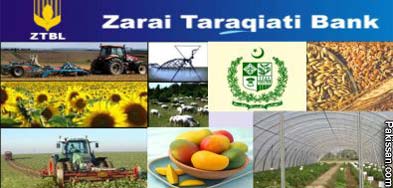AGRICULTURE AND TECHNOLOGY:
Credit-starved farm and agro industries
By
Muhammad Bashir Chaudhry
 June
27, 2011: THE government should focus on development of agro
industries in the rural areas for boosting export of
processed food products, says the president of the Islamabad
Chamber of Commerce and Industry.
June
27, 2011: THE government should focus on development of agro
industries in the rural areas for boosting export of
processed food products, says the president of the Islamabad
Chamber of Commerce and Industry.
It should help farmers to modernise farming, improve per
acre yield and cultivate new varieties of fruits and
vegetables.
Foreign buyers can be particularly attracted if more
attention is paid to organic farm products. The country can
become self-sufficient in food grains and create exportable
surplus.
But the basic question is whether the existing institutional
framework of farm credit and rural development is sound
enough to deliver.
A review of the SBP and other publications gives the
impression that the sector needs much more attention than
what the lending institutions provide. Banks are meeting
only around 45-50 per cent of the farm credit requirements
and the number of borrowers is around two million out of 6.6
million of the country’s farmers.
The credit is highly concentrated in crop sector or
production loans with around 75 per cent of the total
disbursement on this count, and there is an uneven
geographical distribution with more than 80 per cent of the
credit going to Punjab.
Agriculture credit is only six per cent of the loan
portfolio of banks. There is lack of commitment among the
banks’ management and non-availability of innovative lending
products.
Banks do not see farm financing as a viable business due to
agriculture-specific risks. The ratio of nonperforming farm
loans is high due to the culture of write-offs/waivers.
The mark-up rate of farm credit is generally higher than the
commercial and industrial credit. Banks’ markup rates are
not fixed sector-wise but are based on their cost structure
and risk profile of the borrowers and the sector. Banks are
required by the SBP to use Kibor as a benchmark for pricing
of their loans.
Informal credit market is characterised by low transaction
costs, very high interest rates and rapid disbursement of
credit.
The close familiarity of borrowers with informal lenders,
coercive loan recovery methods and the inability of formal
institutions to reach the poor, have brought about heavy
dependence of the rural population on informal credit
markets.
Agriculture is also susceptible to risks on account of
natural hazards, unreliable infrastructure, poor pricing
policies, insufficient and improper marketing mechanism,
poor quality seed, low per acre yield and lack of
coordination among the government service delivery agencies.
Fears are that many farmers are crossing poverty line
because of decrease in land holding to below subsistence
level due to
Islamic inheritance laws.
Farm workers are being
displaced due to mechanisation of large land-holdings. These
unemployed or under-employed poor people move to cities and
create social problems.
Enough steps are not being taken to hold them in rural areas
by providing them jobs with productive and income-generating
activities. The farmers and rural workers are thus left at
the mercy of informal lenders and middlemen to exploit.
There is an urgent need for specialised banks/DFIs for
facilitating credit flow to small farmers-cum-handicraftsmen
for development of agriculture as well as cottage and
village industries, handicrafts and other rural crafts.
Rural development can be promoted by financing of agro-based
micro-industries, small industries and agro-infrastructure.
Loans by the commercial or microfinance banks are at high
commercial rates and unsuitable for small farmers and
unemployed rural workers.
The agro-finance banks should offer soft small loans that
are affordable to people in the rural areas. These banks may
be provided suitable credit lines to be used as soft loans
to farmers cum-handicraft men and women. The whole structure
of the agro-financing and rural development should be
revamped.
Growing of food grains or cash crops and working of rural
cottage industries or handicrafts is closely interlinked. A
typical farmer with small land holding may be concurrently
involved in all these activities for survival and welfare of
his family. All members of the family contribute in this
endeavour.
However, their efforts are often frustrated when they are
unable to get fair price for their produce, owing to
machination of shrewd middlemen.
The lending and loan recovery practices of the financiers in
rural areas should be fair, equitable and non-exploitative.
This is essential for economic revival, public welfare and
self-sufficiency in food.
Courtesy: The DAWN